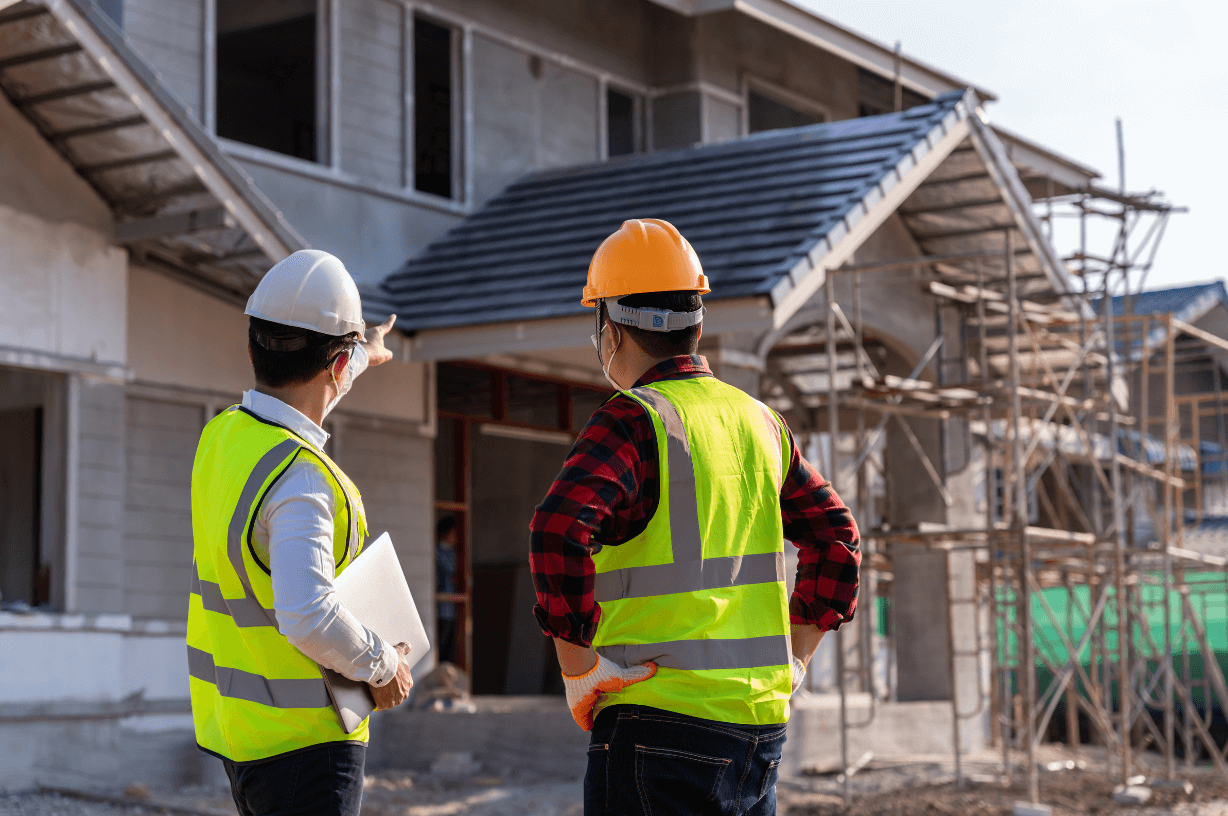Are you considering building your dream home from the ground up? Whether you decide to work with a builder and customize a predesigned home or you choose to go with a contractor for total control over your build, you are about to embark on a real adventure – and that can bring on a little apprehension.
While the idea of creating a living space that’s tailored to your preferences is undoubtedly exciting, the process can be complex and challenging – and most people have no idea where to begin. To help you navigate this process, we have a few tips to make your homeownership journey easier.
1. Investigate the Area Before Purchasing Land
Unless you’re working with a builder in a housing development, you will need to find the right plot of land for your build. Before you commit to a purchase, you need to thoroughly investigate:
- The location. Is the property in a flood zone? Is there a homeowners’ association involved? Have you researched the area’s schools, crime rates and property taxes? What are the local amenities? What would your commute look like?
- Zoning. Is the location zoned for residential, mixed or something else? Will you need a variance before you can build?
- Utilities. A remote property may appeal to your introverted nature and have a great price – but the cost of hooking up utilities in an isolated area could be prohibitive.
- Deed restrictions. You need to make sure that there are no special restrictions on what can be built on the land and no easements that might ultimately affect your plans or your use of the property in the future.
This advanced research helps you to be certain that your new home is not only a sanctuary but also a sound investment in a location that suits your lifestyle. Working with a real estate professional who is experienced in land deals can make this part of the process go much more smoothly. It also assures that you’re making the right choice.
2. Prioritize to Fit Your Budget
If there’s one thing that you’ll probably hear over and over it’s, “You’re bound to go over your budget.” Because it is a big project, that may be true – but you can limit any financial distress on your end by establishing a realistic budget, prioritizing your spending and keeping a modest amount of money in reserve for any unforeseen expenses.
3. Compare Dwellings and Don’t Overbuild
If you have a generous budget, it can be really tempting to throw every lovely feature that you’ve ever admired in a home into your build – but don’t do it.
If you end up building a home that is significantly bigger and fancier than the surrounding homes, you may not see very significant returns on your investment, if any, when it comes time to sell. A million-dollar mansion on a street with modestly priced homes may have trouble attracting the right buyers, and that could make it very difficult for you to move in the future should the need arise.
Focus on creating a space that meets your needs without exceeding them, considering both your current and future requirements for your living space.
4. Select Your Builder for More Than Just Price
Choosing a builder or contractor is one of the most critical decisions in the home-building process, so take your time making this selection.
While cost is always going to be a factor, it should not be your sole consideration. Look for professionals with a solid reputation, a portfolio of successful projects and positive client reviews online (or in person, if you happen to know someone who has used their services before).
Communication is also key – choose someone who listens to your needs and communicates well, because you may be working with your builder for quite a while. If you sense a personality conflict, it is better to find someone else than butt heads with your contractor throughout the process.
5. Think About the Lifestyle You Want
When designing your future home’s layout, consider the lifestyle you want and how that should ultimately affect your design choices.
If you love hosting family gatherings or parties with your friends, for example, you might want to prioritize an open-concept kitchen and living area. If you’re a movie buff, consider splurging on a home theater in the basement. If you value privacy, plan for well-defined spaces so that you can isolate yourself when you need some distance. Tailor the layout to your daily routines and activities to create a home that truly suits your lifestyle.
6. Limit the Amount of Customization
Customization can be exciting – but also mentally and financially draining. When you realize that you can choose everything from the color of the wood cabinets in the kitchen to the hardware on your doors, the choices and decisions can seem overwhelming.
Prioritize your customization needs and focus on elements that will enhance your daily life. Strike a balance between personalization and practicality to avoid unnecessary complications. It’s perfectly okay to ask the builder for suggestions and take their guidance when you aren’t sure what will work best.
7. Avoid Overly Trendy Features
While it’s tempting to incorporate the latest design trends, keep in mind that all trends come and go. Open-concept living was huge – right up until it wasn’t. Now people are remodeling to cut down those unwieldy spaces. The sunken living room of the 70s now either gets dubbed “deliciously retro” or it just looks dated.
Choose design elements that will stand the test of time, both in terms of style and functionality. This approach ensures that your home remains relevant and appealing for years to come – and that will help protect your investment for the future.
8. Expect a Higher Down Payment and Interest Rate
Building your own home often involves a higher down payment on your mortgage and potentially higher interest rates compared to purchasing an existing property.
Be prepared for this financial commitment and factor it into your budget. Consult with financial experts and your chosen lender to ensure you understand the financial implications and can manage the costs.
Finally, as with any large project, you need to be patient. The home-building process has a lot of small steps, and it can take some time to coordinate everybody that has to be involved. The reward of seeing your home come together from the ground up can make all the time, effort and occasional frustration worth it.
amanda.phillips@talktotucker.combill.ingram@talktotucker.combrad.layton@talktotucker.comeditors-pickerina.pribyshchuk@talktotucker.comfeaturedlloyd.zimmerman@talktotucker.commark.callahan@talktotucker.commary.layton@talktotucker.compriscila.hale@talktotucker.comterri.mcgraw@talktotucker.com




